Related Research Articles

Charles Boyer was a French-American actor who appeared in more than 80 films between 1920 and 1976. After receiving an education in drama, Boyer started on the stage, but he found his success in American films during the 1930s. His memorable performances were among the era's most highly praised, in romantic dramas such as The Garden of Allah (1936), Algiers (1938), and Love Affair (1939), as well as the mystery-thriller Gaslight (1944). He received four Oscar nominations for Best Actor.

Alan Walbridge Ladd was an American actor and film and television producer. Ladd found success in film in the 1940s and early 1950s, particularly in Westerns such as Shane (1953) and in films noir. He was often paired with Veronica Lake, in noirish films such as This Gun for Hire (1942), The Glass Key (1942) and The Blue Dahlia (1946).

George Raft was an American film actor and dancer identified with portrayals of gangsters in crime melodramas of the 1930s and 1940s. A stylish leading man in dozens of movies, Raft is remembered for his gangster roles in Scarface (1932), Each Dawn I Die (1939), and Billy Wilder's comedy Some Like It Hot (1959), as a dancer in Bolero (1934), and a truck driver in They Drive by Night (1940).

George Brent was an Irish-American stage, film, and television actor.
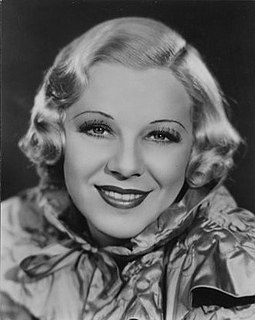
Glenda Farrell was an American actress of film, television, and theater. With a career spanning more than 50 years, Farrell appeared in over 100 films and television series, as well as numerous Broadway plays. She received a star on the Hollywood Walk of Fame on February 8, 1960, and won an Emmy Award for best supporting actress for her performance in the television series Ben Casey in 1963.

Charles Clarence Robert Orville Cummings was an American film and television actor known mainly for his roles in comedy films such as The Devil and Miss Jones (1941) and Princess O'Rourke (1943), but was also effective in dramatic films, especially two of Alfred Hitchcock's thrillers, Saboteur (1942) and Dial M for Murder (1954). Cummings received five Primetime Emmy Award nominations, and won the Primetime Emmy Award for Best Actor in a Single Performance in 1955. On February 8, 1960, he received two stars on the Hollywood Walk of Fame for his contributions to the motion picture and television industries. The motion picture star is at 6816 Hollywood Boulevard, the television star is on 1718 Vine Street.
Norman Krasna was an American screenwriter, playwright, producer, and film director. He is best known for penning screwball comedies which centered on a case of mistaken identity. Krasna also directed three films during a forty-year career in Hollywood. He garnered four Academy Award screenwriting nominations, winning once for 1943's Princess O'Rourke, a film he also directed.
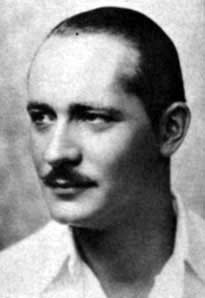
Norman Kerry was an American actor whose career in the motion picture industry spanned twenty-five years beginning in 1916 and peaking during the silent era of the 1920s. Changing his name from the unmistakably German "Kaiser" at the onset of World War I, he rose quickly in his field, becoming "the Clark Gable of the [1920s]." He often played the heroic dashing swashbuckler or the seductive lothario and was extremely popular with female fans. On a personal level, Kerry was known as a prankster and was said to have a wonderful sense of humor and to be very popular. He also achieved some recognition as a dog fancier, maintaining kennels at his home that were "known throughout the world among lovers of aristocratic dogs." As his film career waned in the 1930s, he became known as an international bon vivant and adventurer who lived in the French Riviera and even joined the French Foreign Legion.
Leonard Spigelgass was an American film producer and screenwriter.
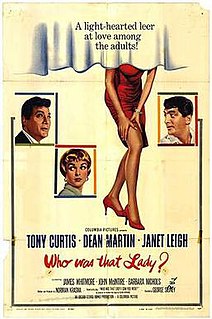
Who Was That Lady? is a 1960 comedy film directed by George Sidney and starring Tony Curtis, Dean Martin, and Janet Leigh.
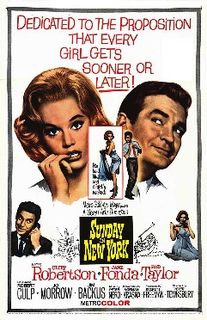
Sunday in New York is a 1963 American Metrocolor romantic comedy film directed by Peter Tewksbury and starring Jane Fonda, Rod Taylor and Cliff Robertson. The soundtrack score was composed and performed by Peter Nero although Mel Tormé contributed the vocals for the title song. It was written by Norman Krasna based on Krasna's play of the same name.

You and Me is a 1938 American crime film noir directed by Fritz Lang and starring Sylvia Sidney and George Raft. They play a pair of criminals on parole and working in a department store full of similar cases; Harry Carey's character routinely hires ex-convicts to staff his store. The film was written by Norman Krasna and Virginia Van Upp.

Conchita Montenegro was a Spanish model, dancer, stage and screen actress. She was educated in a convent in Madrid.
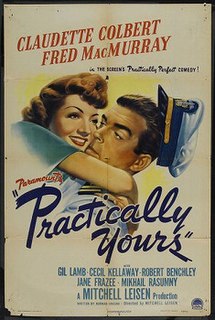
Practically Yours is a 1944 comedic film made by Paramount Pictures, directed by Mitchell Leisen, written by Norman Krasna, and starring Claudette Colbert and Fred MacMurray.

I Married a Woman is a 1958 American comedy film made in 1956, starring George Gobel and Diana Dors, produced by Gobel's company Gomalco Productions. The film also features John Wayne in a cameo role as himself. It was filmed in RKO-Scope and black and white except for one of Wayne's two scenes, which was shot in Technicolor. The film's original title was "So There You Are".
Seton Ingersoll Miller was an American screenwriter and producer. During his career, he worked with many notable film directors such as Howard Hawks and Michael Curtiz. Miller received two Oscar nominations and won once for Best Screenplay for fantasy romantic comedy film Here Comes Mr. Jordan (1941) along with Sidney Buchman.
John Monk Saunders was an American novelist, screenwriter, and film director.
Time for Elizabeth is a 1948 play written by Norman Krasna and Groucho Marx.
The Man With Blond Hair is a play by Norman Krasna based on a true story. Although Krasna became better known for comedy this was a drama; the writer later said that he "really wrote" the play "to win the Nobel Peace Prize". The play only ran for 7 performances on Broadway. This failure prompted him to return to comedy and Krasna wrote Dear Ruth his most popular hit.
Love in E-Flat is a 1967 comedy play by Norman Krasna.
References
- ↑ MUSICAL TO OPEN TODAY AT WARNERS: Los Angeles Times 28 Sep 1933: 11
- ↑ Characters From Real Life Basis for "Louder Please" Los Angeles Times 15 Oct 1933: A7.
- ↑ BROUN PLANS TO GIVE NEW INTIMATE REVUE New York Times 25 Sep 1931: 34.
- ↑ THE THEATRE: Hollywood Satire Wall Street Journal 19 Nov 1931: 4.
- ↑ THE PLAY: Slandering the Movies Again. Pasquinade of Opera. By J. BROOKS ATKINSON. New York Times 13 Nov 1931: 26.
- ↑ Patrick McGilligan, "Norman Krasna", Backstory: Interviews with Screenwriters of Hollywood's Golden Age, California Press p 217
- ↑ Political Satires Newest Plan of Hollywood Film Producers Los Angeles Times 16 Mar 1932: A9.
- ↑ Rights Secured Los Angeles Times (1 Mar 1963: C13.